Table of contents
The raw pear (we are describing the species Pyrus communis here) belongs to the pome fruit family. Along with the apple, it is one of the most popular types of fruit in Europe, especially in organic quality. The fruit is rich in health-promoting substances and can be eaten raw, dried, cooked or preserved.
Use in the kitchen
Pears are easy to digest thanks to their low acid content and are an ideal and healthy snack when eaten raw. However, they have a high glycemic load (GL). The consistency of these fruits depends on the variety and can be refreshingly crunchy, but also soft and juicy. The flesh is white and sometimes a little grainy. Pears can be used in many different raw food dishes, for example in fruit salad, as a topping for muesli (for example in pea muesli as a substitute for apple), as a fruity addition to smoothies with dates and spinach or in home-made juices. Pears also go well with green salads or chicory thanks to their mild taste.
Cooked pears or pear puree can be used to enhance porridge, vegan rice pudding, semolina pudding or autumn and winter baked goods. Pear puree is also ideal as a plant-based egg substitute: for example, you can use three tablespoons of the fruit puree as a binding agent in vegan cakes or pastries instead of a chicken egg. Pears also taste particularly good in combination with cinnamon or cardamom ; you can make them into a chutney with these spices or bake them (for example with walnuts ) and serve them as a dessert. Other tasty dessert options with pears are a baked crumble with oatmeal or cake. Dried pears can also be found in bread and pastries under the name Kletzen.
As an alternative to conventional industrial sugar, you can also use pear syrup, a syrup made from pear juice, when cooking and baking. Fresh pear juice is a tasty refreshing drink and can be enjoyed neat or diluted.
Before eating raw pears, it is advisable to wash the fruit. You can then rub them dry with a cloth and eat them with the peel. A sliced pear will discolour much less quickly thanks to a few drops of lemon juice.
Vegan recipe for pear salad with nuts
Ingredients (for 2 people): 2 pears (organic), 2 tbsp freshly squeezed lemon juice , 40 g walnuts, 300 g lamb's lettuce , 1 tbsp tahini , another 2 tbsp freshly squeezed lemon juice, 5 tbsp drinking water , 1 clove of garlic .
Preparation: Wash the pears, rub them dry and then quarter them. Sprinkle the pear pieces with 2 tablespoons of lemon juice, put them in a pan and sauté for one minute on each side with a dash of water. Wash the lettuce and pat dry. For the dressing, mix the tahini with lemon juice, water and freshly squeezed garlic clove. To serve, divide the lamb's lettuce between plates, spread the steamed pear pieces and walnuts on top and top with the dressing. For a raw food version, you can use raw pear pieces.
Vegan recipes with pears can be found under the note: " Recipes that have the most of this ingredient ".
| Not only vegans or vegetarians should read this: Vegans often eat unhealthily. Avoidable nutritional mistakes . |
Purchasing - Storage
Most of the pear varieties cultivated in Europe have their main season in autumn. 1 At this time they are available regionally and partly in organic quality in Coop , Billa , Migros , Denner , Volg , Spar , Aldi , Lidl , Rewe , Edeka and Hofer . Organic shops such as Alnatura or Denn's Biomarkt usually sell pears in organic quality all year round. When purchasing, it is important to note that the fruit ripens from the inside out. This means that by the time the skin ripens, it may already be overripe and mealy on the inside. Fresh pears ideally have no bruises or holes.
The availability of pears varies depending on the size of the store, catchment area, etc. If you are interested, click on our recorded food prices for the DA-CH countries (above under the ingredient image). There you will find current prices from various supermarkets and their price development.
Storage tips
Pears are primarily produced for immediate consumption, as they are difficult to store. 2 Compared to apples , which can sometimes be stored for up to a year, pears spoil more quickly and only selected varieties last more than a few months (such as Conference or Rocha). They should be stored in a cool, dark place without touching each other. 3 Alternatively, pears can also be frozen. To do this, wash, cut and core the fruit and then store it in a freezer bag at -18 °C for up to 10 months.
Early summer and winter varieties such as Coscia or Forelle are very susceptible to spoilage, with these pear varieties beginning to rot from the core outwards and then turning brown and inedible. 1
Ingredients - Nutritional values - Calories
Raw pears consist of up to 84% water, the energy content is 54 kcal per 100 g. Proteins and fats are poorly represented among the nutrients, the main component of energy comes from carbohydrates (15 g/100g). 4
Pears are a good source of potassium (140 mg/100g), an important element for the body's water balance. Fruits with similar levels of this essential element include grapefruit and lemons . Foods that have a much higher potassium content are soybeans (1797 mg/100g) and dehydrated bananas (1491 mg/100g).
What vitamins do pears have? A raw pear does contain relatively low amounts of vitamins - such as vitamin K (4.4 µg/100g) or vitamin C (4.3 mg/100g). On the other hand, it contains valuable mineral salts such as calcium , magnesium and phosphorus . The trace element iron can be found in small amounts (0.18 mg/100g) in pears. Foods that contain more iron are soybeans (16 mg/100g) or sesame (15 mg/100g). 4
Dietary fiber , which is also found in pears, plays a crucial role in human digestion. Savoy cabbage and chicory have comparable amounts of fiber (3.1 g/100g), while for very fiber-rich foods it is better to use psyllium husks (81 g/100g) or wheat bran (43 g/100g).
The vitamin folic acid, which is important for cell renewal, is only found in food in its precursor, folate . Pregnant and breastfeeding people in particular have an increased need for this substance and should ensure that they get enough of it. Pears contain 7 µg of folate per 100 g, which covers 4% of the normal daily requirement. Foods that are particularly rich in folate are pulses such as mung beans and chickpeas , or brassica vegetables (e.g. kale or Brussels sprouts ), but the cooking process leads to losses. More information about folic acid can be found here .
Most of the important ingredients are found in the pear's skin, which is why the fruit should always be eaten unpeeled after washing if possible. 5
The complete ingredients of pears, the coverage of the daily requirement and comparison values with other ingredients can be found in our nutrient tables. In the article Nutrients explained you will get a detailed insight into the topic.
Effects on health
Are pears healthy? Pears contain some secondary plant substances that can have a positive effect on health due to their antioxidant effect. They have an anti-inflammatory effect and can reduce the risk of cancer or other circulatory diseases. However, it should be noted that there are sometimes large differences in the concentration of these substances between the different types and varieties of pears. 5,8
Dangers - Intolerances - Side effects
Eating pears can cause allergic reactions. In northern Europe, this usually affects people who also have allergic reactions to birch pollen. Local symptoms such as a scratchy mouth and throat occur 5 - 15 minutes after consumption. The allergen involved can be rendered ineffective by cooking beforehand. In Mediterranean countries, however, an allergic reaction to pears occurs as a cross allergy to peaches. The possible symptoms are far more serious in this form, with stomach pain, vomiting or life-threatening conditions. 6
Pear seeds (like apple, apricot or plum seeds) contain small amounts of amygdalin, a precursor to hydrogen cyanide, which is toxic to humans. Accordingly, such seeds should not be consumed in large quantities. 7
Ecological footprint - animal welfare
The ecological CO 2 footprint of regional pears is 0.3 kg CO 2 eq/kg, similar to that of regional apples or grapes. 10 Imported pears from other continents, on the other hand, do rather poorly in the assessment of the climate effect due to the high amount of CO 2 during transport by ship. 11 The amount of water required to produce 1 kg of pears is 922 liters. 18
In conventional agriculture, synthetic pesticides and herbicides are often used to combat pests. The impact of these agents is not limited to individual plants, however; they also have a negative impact on their surroundings. In addition, they can sometimes be found in the end product; high levels of residues of various pesticides were found in fruit from Belgium and Portugal in particular. 12 Many studies have now pointed to possible links between pesticides and chronic diseases in humans. 19 To avoid pesticides in food, it is better to use organically grown fruit and vegetables, as the use of synthetic pesticides is prohibited here.
Animal protection - species protection
During the flowering period, the pear tree is dependent on insects such as wild bees or honey bees for pollination, as its flowers are self-sterile. However, pear blossoms are not as attractive as apple or apricot blossoms, for example, due to the low amount of nectar and the chemical composition of the pollen. However, there are differences between the individual pear species, which can play a major role in the selection of species for plantations. 15
Worldwide occurrence - cultivation
The origin or genetic center of the modern pear ( Pyrus ) is not clearly established. There is no agreement about the domestication centers and origins: China and the region around Asia Minor to the Middle East are assumed. Of the 22 catalogued wild pear species, all are native to Europe, the temperate zones of Asia and North Africa. 9 Around 14 species occur in Asia, eight of which are only found in China.
Found in the wild
The wild pear ( Pyrus pyraster ) is now rarely found due to its high site requirements and the fruits that cannot be used for commercial consumption. This tree species is also on the red list of endangered species in some federal states.
Cultivation - Harvest
Worldwide, the pear is the third most important fruit variety in the temperate climate zone after grapes and apples. 2 According to FAOSTAT, 26.32 million tons of pears were produced worldwide in 2022. The main producing countries are China (19.26 million tons), the USA (584,230 tons), and Argentina (566,227 tons). 20
Other source: China is the main producer of pears with more than 16 tonnes per year, followed by Argentina with 930,340 tonnes/year. Within Europe, Italy (772,577 tonnes) and Spain (360,957 tonnes) are the countries with the highest production. 14 The cultivated varieties Conference, William, Abbé Fétel, Blanquilla, Doyenne du Comice, Kaiser, Dr. Jules Guyot and Coscia account for 80% of production. 1 These varieties are mostly harvested in autumn and have only limited storage capacity.
Growing in the garden: Pear trees need deep, well-drained and nutrient-rich soil. When choosing a location, you should also make sure that the tree is as sheltered as possible, but still receives plenty of direct sunlight. This is essential as an energy source for the production of tasty fruit. Ideally, the tree should be planted in late autumn (October/November), so that it has enough time for roots to grow over the winter. To plant it, first dig a sufficiently large planting hole and partially fill it with fresh and compost soil. After planting the pear tree, it is advisable to also attach a support post to which the young tree can be tied. Water the freshly planted tree well and, if necessary, protect it from other plants with a coconut mat. During the first few years, you can support the tree's growth by adding additional water. 13
Further information
Within the subfamily Maloideae (Pomoideae) there are 22 species of the genus Pyrus , the classification of which is complicated. These include the cultivated pear ( Pyrus communis L. ), which is the most commonly cultivated in Europe, but also, for example, the Chinese pear ( Pyrus calleryana 'Chanticleer' ) or the Pyrus pyrifolia Nakai , known as the Nashi pear. The Pomoideae subfamily belongs, like the apple ( Malus domestica ), to the rose family ( Rosaceae ). 2
The wood of the pear tree is highly valued in industry as a domestic alternative to tropical wood and is primarily used in the furnishing sector, such as furniture. Pear wood is also a component in the manufacture of musical instruments, such as recorders, organ pipes and harmonicas. 16
Alternative names
The English name for pear is pear. An alternative name for dried pears is Kletzen. In Switzerland, pear syrup is also known as pear honey.
In contrast to Birnbaum, the expression Birnenbaum does not appear in the Duden dictionary. The Digital Dictionary of the German Language ( DWDS ) lists the latter term as a secondary form.
- Natalie Sidler, Dr. phil. I
- Sarah Layendecker, BSc Wildlife Management, vor MSc

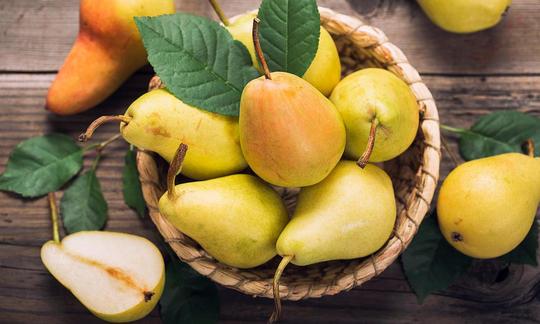

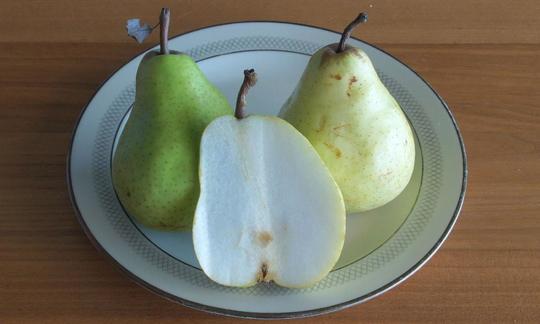

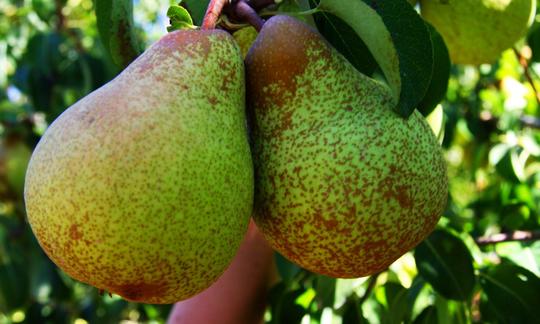

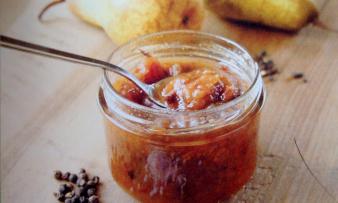
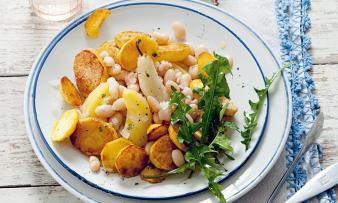
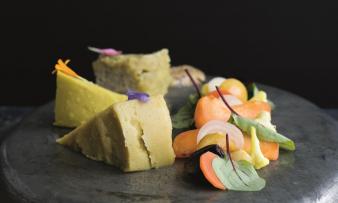





Comments